Develop a Successful Business Continuity Plan for NDIS Providers
The National Disability Insurance Scheme (NDIS) is designed to support Australians with disabilities by offering personalised plans. In this article, we’ll explore what the NDIS entails and provides strategies for providers to ensure business continuity even during disruptions.
Understanding the NDIS
The National Disability Insurance Scheme offers customised disability support to individuals based on their specific needs. Tailored plans are designed to help individuals with a disability achieve personal goals and enhance their participation in the community. Access to the scheme is determined by specific eligibility criteria, including age and residency status. The National Disability Insurance Agency (NDIA) began implementing the NDIS in 2013 and continues to oversee its operation. Importantly, the NDIS allows for adjustments in funding plans as an individual’s support needs evolve over time, especially for those with a significant disability of complex nature.
Service providers must understand how the NDIS functions. Registered providers must ensure continuous and uninterrupted support for participants during disruptions. A robust NDIS plan addresses immediate needs and adapts to changing circumstances, which requires meticulous business continuity planning.
Business Continuity Planning for NDIS Registered Providers
NDIS registered providers use business continuity planning to restore operations promptly during challenging situations, aiming to maintain service continuity and minimise disaster impacts on participants and their organisation. An effective business continuity plan includes policy changes, necessary materials acquisition, staffing and resource adjustments, and rigorous testing. A linked Risk Management Plan identifies and manages potential vulnerabilities.
A top-down approach is used to identifying minimum requirements for viability is necessary. Compliance with emergency plans is a must for all providers. The responsibility for implementing the business continuity plan lies with the Executive Leadership Team or Board/Management team.
During incidents, management keeps records, including days out of office, employees affected, and damage to equipment and data. Resources must be maintained to support business continuity. With these measures in place, NDIS providers can ensure that their services remain uninterrupted, even in the face of adversity.
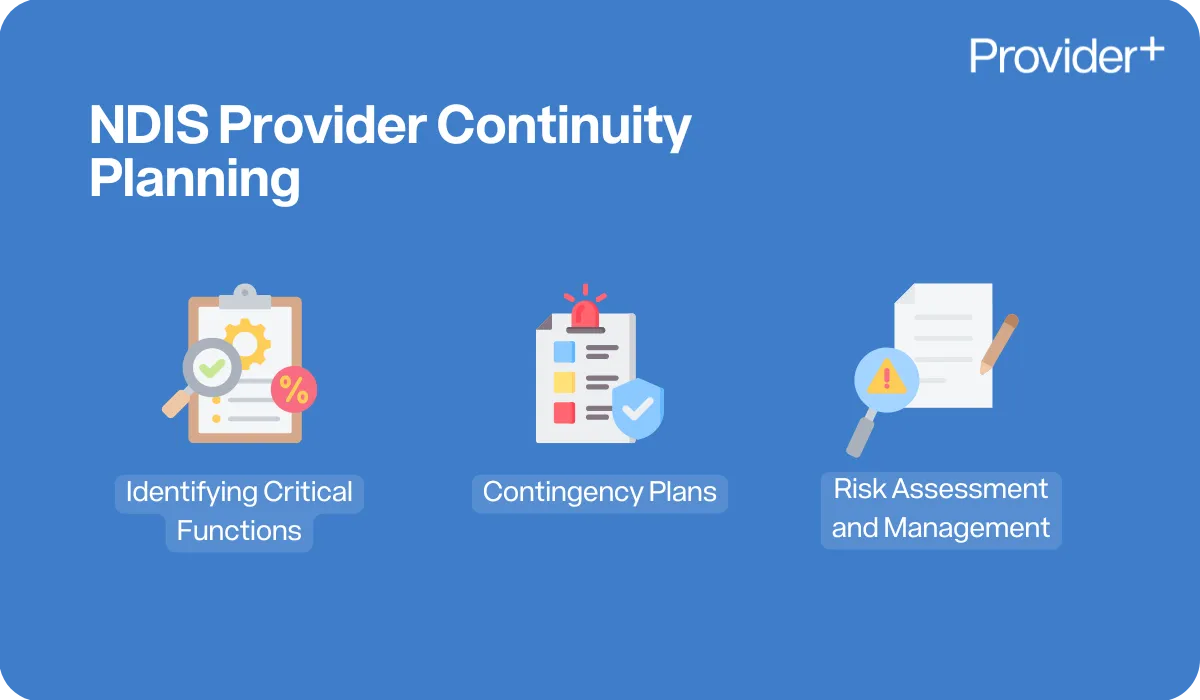
Identifying Critical Functions
Understanding the distinction between critical and non-critical functions helps NDIS providers maintain service delivery during disruptions. Differentiating between these functions is essential for an effective response during emergencies in particular for complex care participants. Conducting regular evaluations of the business continuity plan ensures its ongoing effectiveness against potential disruptions allowing an organisation to adapt to changes, prioritise efforts and allocate resources efficiently.
Risk Assessment and Management
Regular risk assessments identify vulnerabilities that could disrupt NDIS operations. Proactively managing these risks ensures continuity of care for participants. Emergency and disaster management plans must address the risks to participants’ health, safety, and wellbeing. Developing effective mitigation strategies is crucial for minimising the impact of identified risks on service delivery.
A comprehensive risk management approach involves continuous monitoring and evaluation of potential threats. This proactive stance allows NDIS providers to implement timely and effective measures, ensuring that participants receive uninterrupted support. By integrating risk assessment into the overall business continuity plan, providers can safeguard their operations against unforeseen events.
Contingency Plans
Emergency response procedures help NDIS providers and their workers maintain service continuity during crises. Contingency plans should specify specific actions to manage various emergency scenarios effectively. Amendments to the business continuity plan should be based on insights gathered from tests, feedback, and changes in organisational operations.
These plans ensure that NDIS providers are prepared to respond swiftly and effectively, minimising the impact on participants and services.
Contingency Emergency & Disaster Plan for Providers
The Contingency Emergency & Disaster Plan is another critical component linked to a Business Continuity Plan for ensuring the continuity of services provided by NDIS providers during and after a disaster. This can be invoked when there are deficiencies in the normal operating environment. Its objective is to restore the environment and its functions based on priorities and timeframes. The plan remains in effect until normal functions can resume, addressing resource issues such as alternative accommodation, equipment, and process methods.
By having a robust Contingency Emergency & Disaster plan, providers can quickly respond to disruptions, ensuring that participants continue to receive essential services. The plan outlines the necessary steps to recover from a disaster, highlighting the importance of preparedness and resilience in service delivery.
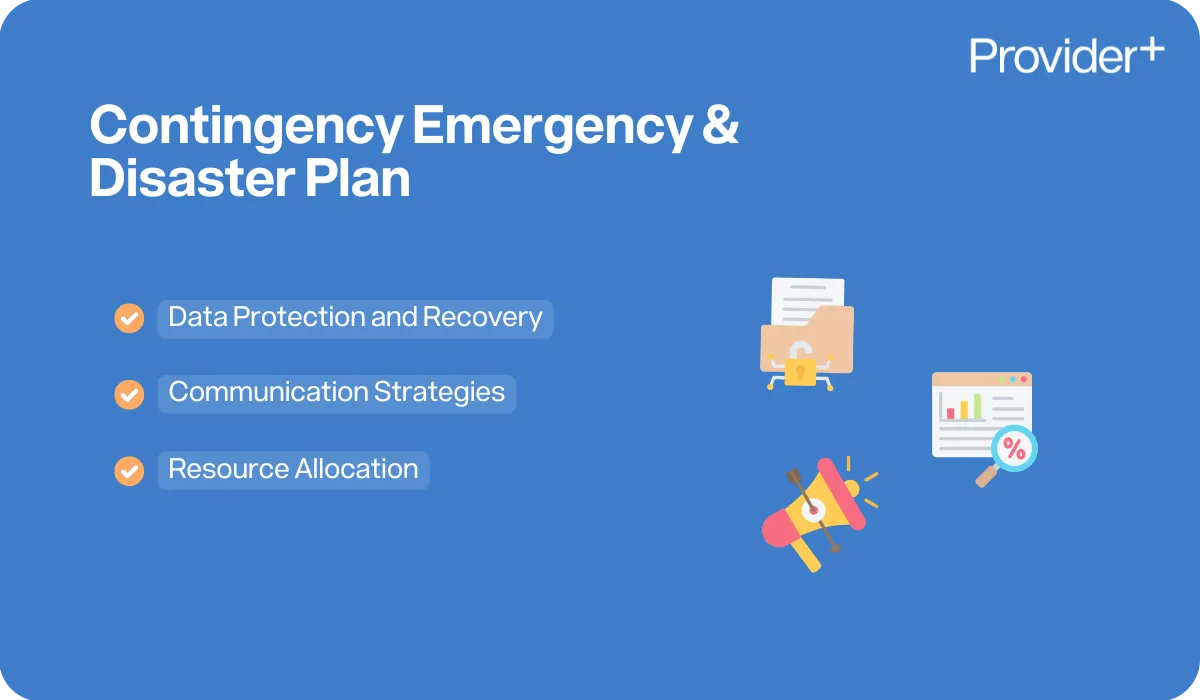
Data Protection and Recovery
Data recovery efforts must align with privacy laws and guidelines to handle sensitive information appropriately. Establishing procedures for data recovery that account for different types of data loss scenarios is crucial. Regularly revising the data recovery strategies based on testing outcomes and real incidents is essential for improving its effectiveness. By prioritising data protection and recovery, providers can safeguard critical information, ensuring continuity of services even in the face of data breaches or loss.
Communication Strategies
It is of utmost importance to establish clear communication protocols in order to provide timely updates to all stakeholders during a disaster situation. Effective strategies involve coordinating with government services, support coordinators, and relevant parties. Having a practical guide in place for communication ensures that everyone involved is informed and can take appropriate action.
By creating robust communication strategies, NDIS providers can ensure that participants and workers are well-informed during emergencies. This reduces confusion and helps integrate a smooth implementation of contingency plans.
Resource Allocation
Allocating resources effectively involves assessing current capabilities and potential shortages during emergencies. Recognising shortages is crucial to maintain continuity of care and manage resources effectively. Planning for alternative resources, such as equipment and infrastructure, helps mitigate the impact of disruptions. By proactively managing resources, providers can maintain essential services to ensure that participants continue to receive the funded supports they need, irrespective of the challenges faced.
Emergency Response Procedures
NDIS providers must be prepared for emergencies to ensure that not only services are not interrupted but also to protect participants and workers. Having clear emergency response procedures helps providers and their workers quickly adapt to changing circumstances and continue their operations. Comprehensive emergency response procedures ensure NDIS providers are well-prepared to handle crises, protecting participants and maintaining service integrity.
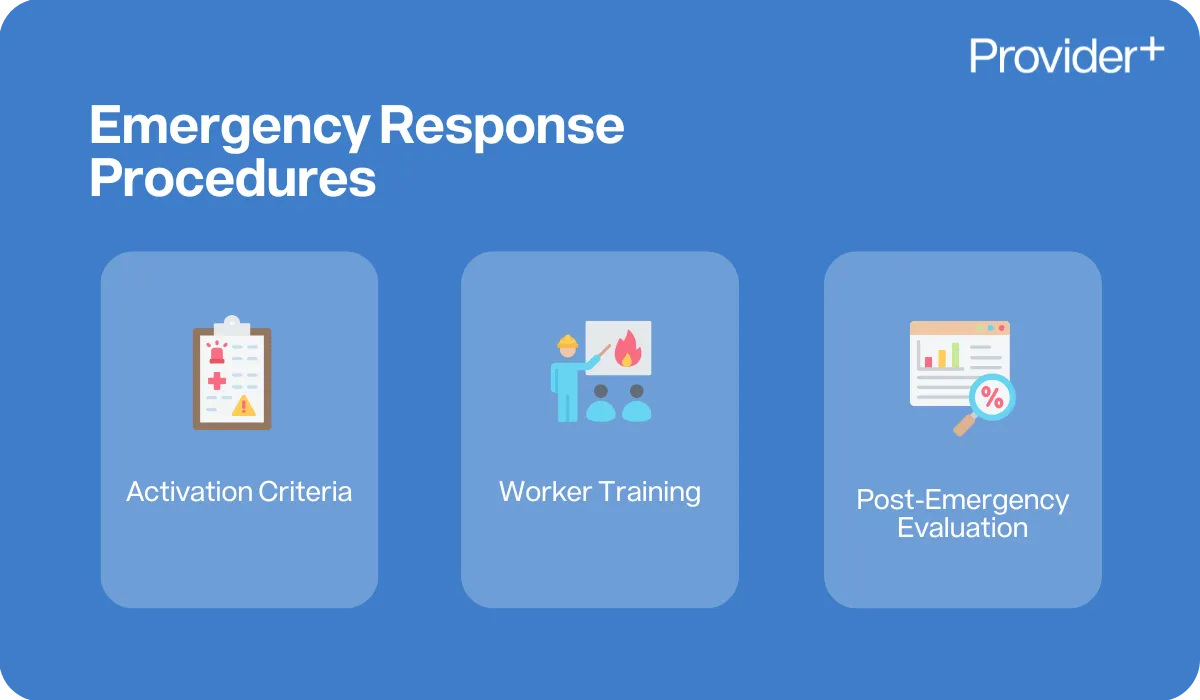
Activation Criteria
The emergency response plan should be activated when normal functions are critically compromised. Activation is determined by significant risks affecting the health and safety of participants. By identifying clear activation criteria, NDIS providers can ensure timely and appropriate responses to emergencies.
Worker Training
Defining clear key staff roles and responsibilities is essential for effective emergency management. Senior management must ensure that during a workers induction into the organisation, that effective Emergency Management training is conducted and that over the course of a workers professional development, that protocols are refreshed on to ensure workers can promptly respond during emergency scenarios.
Post-Emergency Evaluation
Evaluating response effectiveness identifies improvement areas after emergencies. Annual evaluations of emergency plans incorporate changes in participants’ circumstances and improve response strategies. This ensures that NDIS providers are continuously improving their emergency preparedness.
Testing and Maintaining Your Business Continuity Plan
Regularly reviewing and updating the business continuity plan assists in the reflection of procedures to adjust strategies based on both organisational and environmental changes. Regular testing ensures the plan functions effectively during disruptions and scheduling regular sessions for testing helps identify areas for improvement.
Maintaining and testing the business continuity plan ensures providers are prepared for disruptions, guaranteeing continuous support for participants.
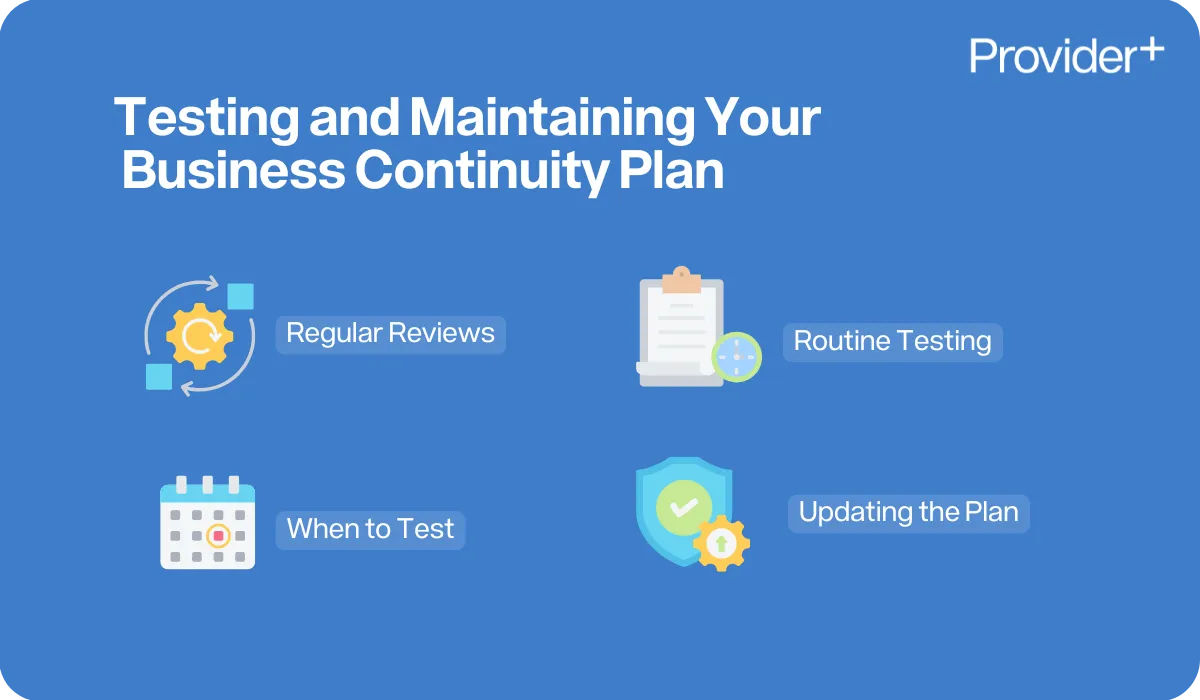
Schedule and Frequency
Testing your business continuity plan on an annual basis will help maintain readiness and identify improvement areas. Depending on the size, scale and complexity of services and participants, some organisations may choose to conduct biannual testing to adapt to rapid changes. It is crucial to conduct testing after significant operational or system changes to ensure procedures are effective.
Regular testing ensures that providers are prepared for any event that might disrupt their services. Feedback from stakeholders regarding these exercises and real incidents should initiate updates to the continuity plan, ensuring it remains effective and relevant.
Updating the Plan
Post-return to normal operations, immediately update the business continuity plan to address identified gaps and inform stakeholders and participants of these changes to demonstrate transparency. Debriefing and further reviewing the identified improvements ensures the business continuity plan evolves to meet new challenges.
Summary
In summary, developing a successful NDIS business continuity plan involves understanding the NDIS framework, identifying critical functions, managing risks, creating contingency plans, and ensuring robust disaster recovery processes are in place. Regular testing and updating of the plan is essential to maintain its effectiveness. By following these steps, NDIS providers can ensure that they continue to deliver vital services to participants, even in the face of unforeseen circumstances. This not only protects the integrity of the service but also enhances the trust and confidence of NDIS participants and their families in the support system.
Frequently Asked Questions
What is the main goal of a business continuity plan for NDIS providers?
The main goal of a business continuity plan for providers is to ensure the continuity of service during disasters by effectively restoring business operations in a timely manner.
Why is it important to identify critical functions in a business continuity plan?
It is important to identify critical functions in a business continuity plan to prioritise efforts and resources, ensuring that essential services remain operational during disruptions. This approach minimises downtime and maintains organisational stability.
What are the key components of a Continuity Plan for NDIS providers?
A Continuity Plan for providers must encompass data protection and recovery, robust communication strategies, and effective resource allocation to ensure a swift restoration of normal operations. These elements are crucial for maintaining service continuity and safeguarding the interests of those served.
How often should NDIS providers test their business continuity plans?
NDIS providers should test their business continuity plans at least annually and additionally whenever there are significant changes to operations or systems. This ensures preparedness and effectiveness in responding to unforeseen disruptions.
What steps should be taken after an emergency to improve future response strategies?
To improve future response strategies, it is crucial to conduct post-emergency evaluations to identify areas for improvement and to update the business continuity plan based on these evaluations and feedback. This will ensure a more effective response in future emergencies.
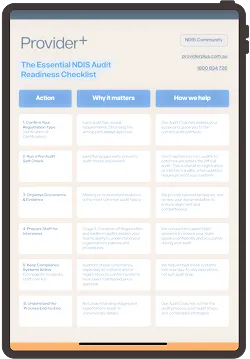
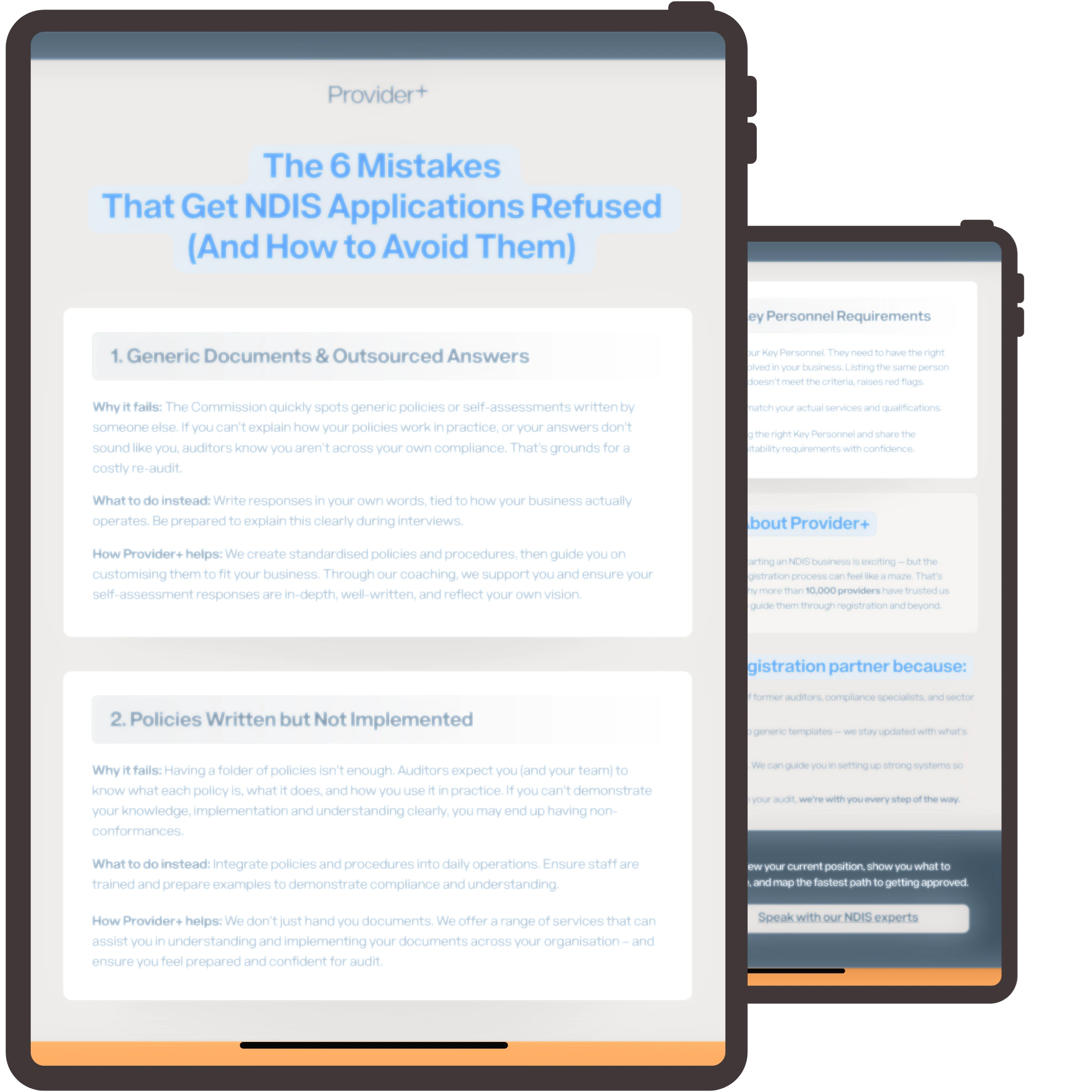
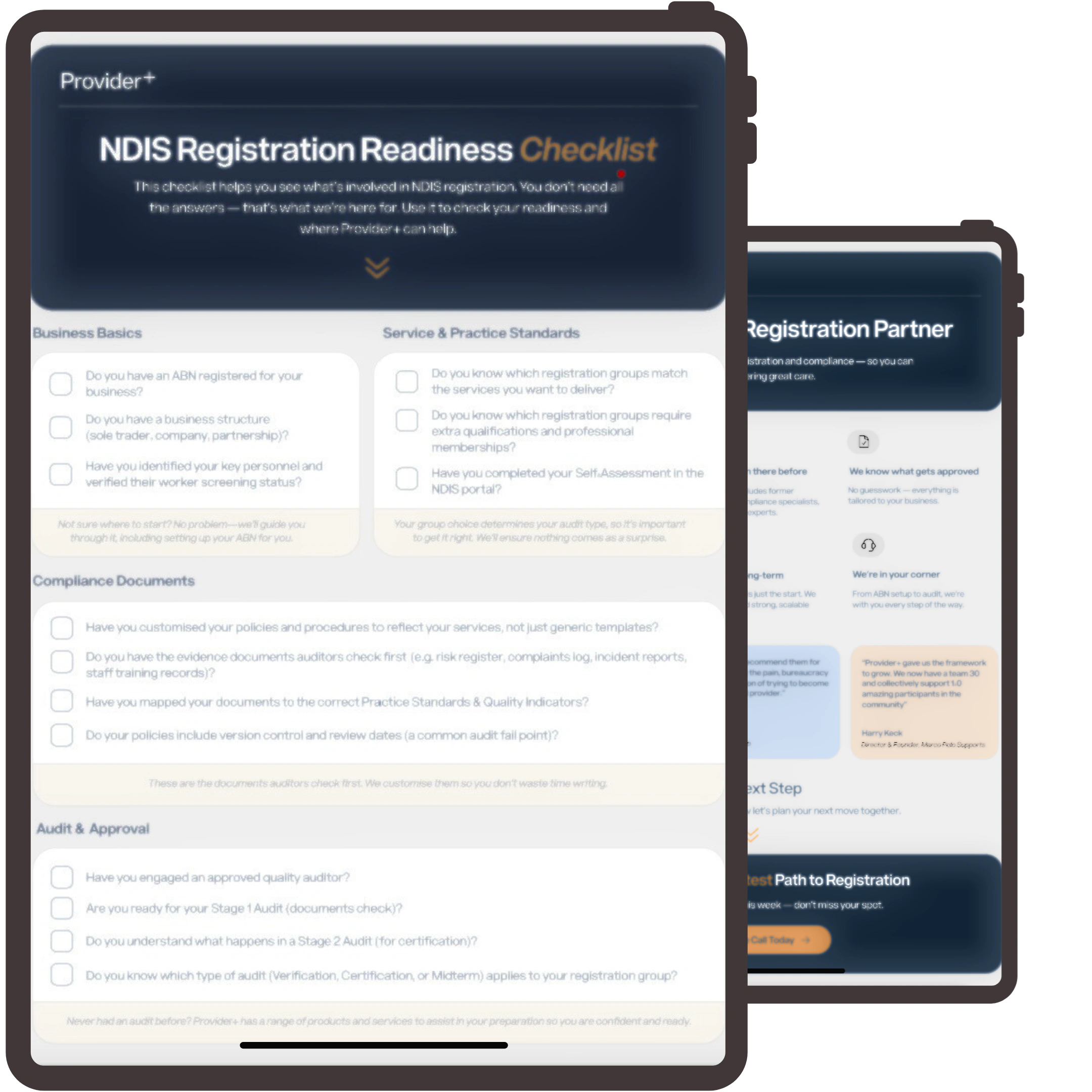

































FAQs
Here is our frequently asked questions.


